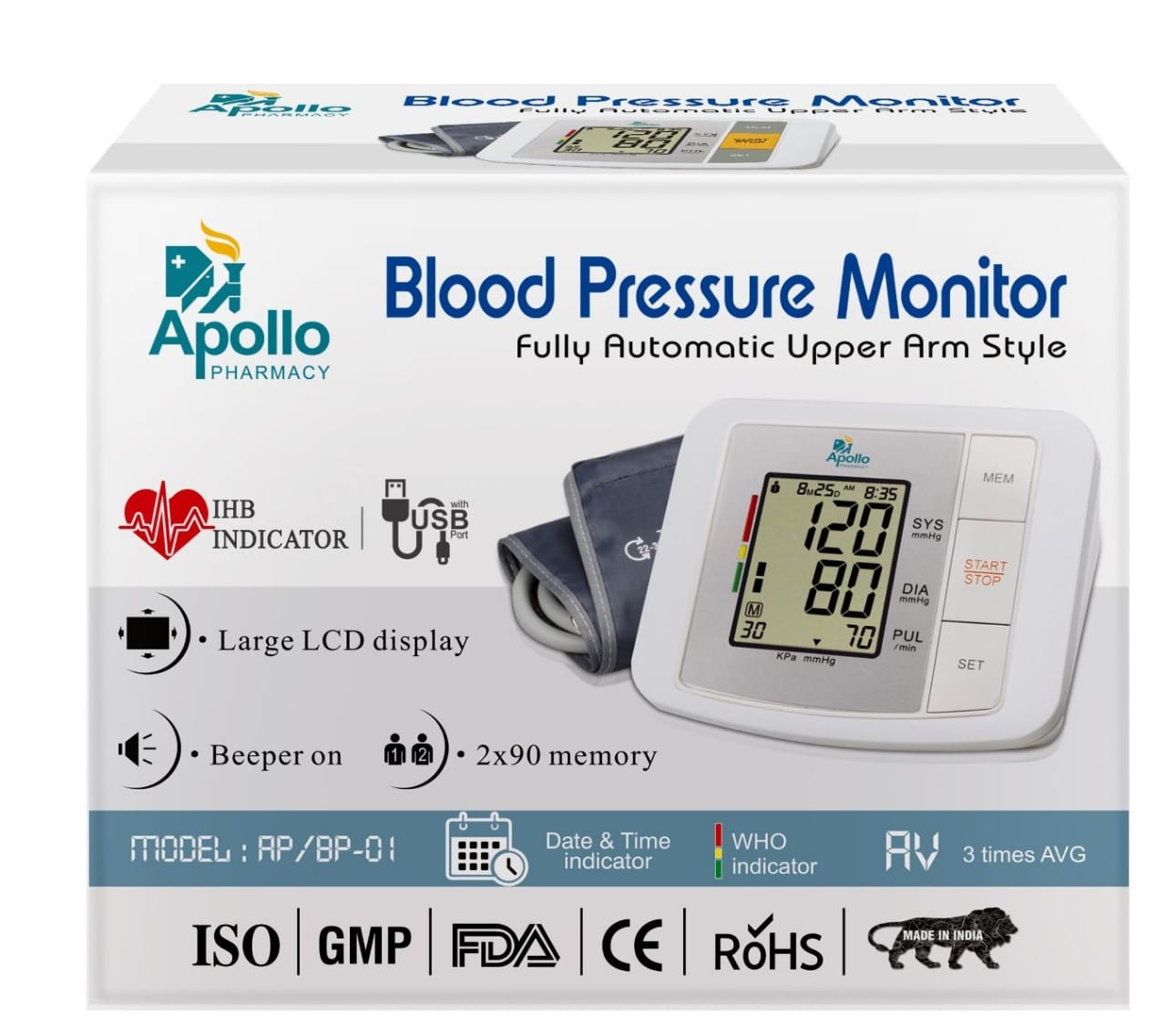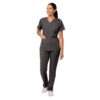Image: https://images.apollo247.in/pub/media/catalog/product/1/9/19830286-1–.jpg
The frequency and timing of blood pressure checks should be determined in consultation with your doctor based on your condition. Maintaining a record of all your readings will provide valuable insights into how your blood pressure is responding to treatment, and aid in making informed decisions regarding your health.
For those suffering from hypertension, a condition characterised by consistently high blood pressure, getting blood pressure checked at the doctor’s office every once in a while may not be enough. For such individuals, regularly checking blood pressure at home is a vital part of treatment. Adopting this practice can significantly help your doctors in determining the effectiveness of your treatment. There is a wide variety of blood pressure machines available in the market, most of which are very easy to use and reasonably accurate. However, it’s essential to know how to select the right blood pressure machine for home and how to use it correctly.
Who Needs to Monitor Blood Pressure at Home?
Monitoring blood pressure at home may be especially beneficial for:
- People diagnosed with hypertension
- Determining the effectiveness of treatment in those suffering from high blood pressure
- People who need close monitoring due to their higher risk of high BP or conditions related to high BP
- Pregnant women suffering from preeclampsia and/or pregnancy-induced hypertension
- Evaluating potentially false readings for people who only have high readings at the doctor’s office (white coat hypertension) or those who only have high readings at home but not at the doctor’s office (masked hypertension).
How to Choose the Right Blood Pressure Machine for Home?
Most medical supply stores and pharmacies, as well as some websites, offer a variety of home blood pressure machines. You can seek your doctor’s help in selecting the one that best suits your needs. Typically, most blood pressure machines have two basic components – gauges for readouts and inflatable cuffs. The gauge works differently for different types of monitors. In some machines, it can take multiple readings and report their average.
Besides, the inner layer of the cuff fills with air, squeezing your arm, and the outer layer features a fastener that holds it in place. The device then calculates the blood flow and heart rate by measuring the changes in the artery’s motion as the cuff deflates.
When it comes to choosing the right blood pressure machine, it’s important to consider a few key factors:
- Finger and wrist monitors are less reliable, so it’s recommended to opt for digital monitors fitted on the upper arm for accurate readings.
- Ensuring a properly fitting cuff is crucial, as ill-fitting cuffs may yield inaccurate measurements. Your doctor can help you figure out the right cuff size for you.
- Look for a monitor with a clear and easy-to-read display for convenient use.
- Lastly, consider the price and check if your health insurance covers the cost of a blood pressure machine for home use.
How to Check Blood Pressure at Home?
To check your blood pressure at home, follow these simple steps:
- Sit in a quiet and comfortable area. Rest and relax for at least 5 minutes before measuring your blood pressure.
- Sit upright with your back supported and feet flat on the floor. Keep your arm straight with your palm facing upwards and resting on a level surface, like a table. Ensure that your arm is at the same level as your heart.
- Fasten the cuff on the bicep, approximately 1 inch above the bend of your elbow. The cuff should fit snugly but not too tight.
- Turn on the digital blood pressure machine and follow the instructions provided by the manufacturer. Most monitors have a start button or will automatically begin inflating the cuff.
- The monitor will start inflating the cuff, which will temporarily stop the blood flow in your arm. Remain still and avoid talking or moving during this process.
- Once the cuff is fully inflated and then deflated, the monitor will display your blood pressure reading on the screen. It will show two numbers: systolic (top number) and diastolic (bottom number).
- Take note of the blood pressure reading, including the date and time. Some digital monitors have a memory function that can store multiple readings.
- If you’re unsure about the accuracy of the measurement or want to confirm the results, then wait for a few minutes and then repeat the process.
Important Tips for Checking Blood Pressure at Home
Following the tips mentioned below can help ensure the accuracy of your BP measurements:
- Avoid smoking, consuming caffeinated beverages, or exercising within 30 minutes prior to checking your blood pressure.
- Rest in a quiet environment for 5 minutes and empty your bladder before taking measurements.
- Take your readings at the same time every day, like in the morning and evening. It’s recommended to measure blood pressure daily, especially two weeks after a change in treatment and the week before your next doctor’s appointment.
- Measure your blood pressure twice each time, with a one-minute gap between readings. Record both results for accurate tracking.
- Always measure your blood pressure directly on the skin without any clothing obstructing the cuff.
- Avoid measuring your blood pressure immediately after waking up, as readings may not be accurate during this time.
- Use the same arm every time when measuring your blood pressure to ensure consistent results.
If you are unsure about whether or not you are measuring your blood pressure correctly, it’s recommended to consult your doctor for guidance. They can demonstrate the proper technique and ensure accurate readings. Additionally, it’s important to keep your doctor informed of your blood pressure measurements, particularly if they fall outside the normal range. This enables your doctor to identify any potential issues early on and prescribe appropriate treatment to manage your blood pressure effectively.
Get all the latest news on Indian daily post.
































